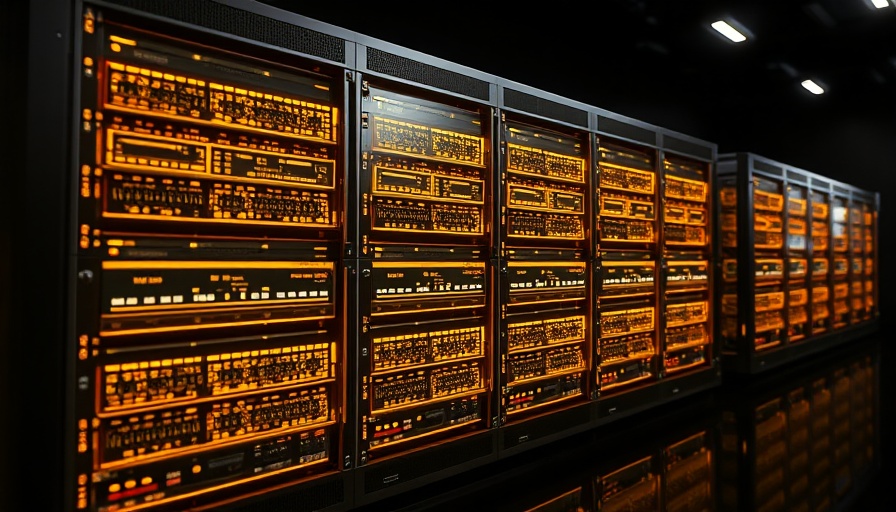
Unveiling the Future of AI: Nvidia's Latest Innovations
Nvidia has taken the AI world by storm with the announcement of two cutting-edge superchips, Blackwell Ultra and Vera Rubin, during the annual GPU Technology Conference (GTC) held in San Jose, California. These chips are not just incremental updates; they represent significant advancements in AI technology, aiming to further enhance how artificial intelligence is developed and deployed across various industries.
What Makes Blackwell Ultra Stand Out?
The Blackwell Ultra chips are designed to offer remarkable performance enhancements, with promises of faster AI processing and superior efficiency. Nvidia's CEO, Jensen Huang, emphasized that these chips could generate up to 50 times more revenue for cloud service providers compared to their previous generation, Hopper. This is particularly crucial in an age where quick responses are vital. Essentially, Blackwell Ultra is about providing the speed and power necessary for real-time AI applications, which is becoming increasingly essential in today's fast-paced digital environment.
The Vera Rubin System: A Leap Forward
Nvidia has also introduced the Vera Rubin system, which features the company's first custom CPU named Vera. Through its new GPU design, Rubin, the system can achieve an impressive 50 petaflops of AI processing power, more than twice that of Blackwell Ultra. As companies continue to meld AI deeply into their operations, solutions like Vera Rubin will be instrumental in supporting extensive AI training and inference workloads. This robust architecture showcases Nvidia's commitment to leading in the AI frontier.
Global Impact of Nvidia's Advancements
Since the advent of impactful AI software, such as OpenAI's ChatGPT, Nvidia has witnessed an incredible surge in sales—over six-fold growth. Major players like Google and Microsoft are invested heavily in Nvidia's technology to bolster their own AI offerings. Huang noted that the demand for AI has escalated rapidly, pushing the industry to rethink its previously made assumptions about computational needs. The growing reliance on tools powered by Nvidia indicates a future where these chips could become foundational in tech infrastructure worldwide.
Comparing Blackwell Ultra and Its Predecessors
While the Blackwell Ultra may not be a groundbreaking new architecture, it performs competitively against previous iterations like the H100 from 2022. Reports indicate that a single Blackwell Ultra chip can perform the same AI tasks with enhanced speed and responsiveness. For instance, the NVL72 clusters, utilizing Blackwell, can provide answers to complex queries in just ten seconds, showcasing a leap from the longer response times of past models.
Future Predictions: What Lies Ahead for Nvidia and AI?
Looking forward, Nvidia's roadmap indicates a chip release cadence that becomes even more dynamic. The Vera Rubin system will see its debut in 2026, and an even more powerful Rubin Ultra is slated for 2027, destined to feature extraordinary performance enhancements. Predictions suggest that these technologies will be pivotal as AI becomes integral across sectors such as healthcare, finance, and autonomous systems.
AI Enthusiasts: Prepare for Exciting Developments!
As we step into a future defined by AI, staying updated with the latest in AI news and developments is essential. Nvidia's ambitious plans and innovations mark a significant shift not just in computing but also in how we harness the capabilities of artificial intelligence to improve lives. With technologies evolving at an unprecedented pace, AI lovers should buckle up for an exciting journey ahead.
Connect with the world of AI and experience the potential that these advancements hold. Explore innovations like Nvidia's new superchips and consider how they might affect your work and life in the months to come.
 Add Row
Add Row  Add
Add 




 Add Row
Add Row  Add
Add 

Write A Comment